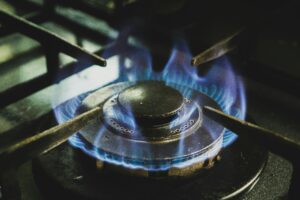Ice makers have become an essential appliance in many households and commercial establishments. Whether it’s for keeping drinks cold at a party or providing ice for a busy restaurant, ice makers play a crucial role in our daily lives. However, like any other appliance, ice makers can encounter problems that can disrupt their functionality. In this blog post, we will explore common ice maker problems, provide troubleshooting tips, and offer a step-by-step guide to diagnosing and repairing these issues. By understanding how ice makers work and knowing how to address common problems, you can ensure that your ice maker continues to provide you with a steady supply of ice.
Key Takeaways
- Common ice maker problems include no ice production, small or misshapen ice cubes, and leaking water.
- Troubleshooting tips for ice maker issues include checking the water supply, cleaning the ice maker, and adjusting the temperature.
- Diagnosing ice maker issues involves checking the water inlet valve, ice maker thermostat, and ice maker mold.
- Common causes of ice maker failure include a faulty water inlet valve, clogged water filter, and malfunctioning thermostat.
- Understanding ice maker components and their functions includes knowing the roles of the water inlet valve, ice maker mold, and ice maker thermostat.
- Repairing ice maker water supply issues involves checking for kinks in the water line, replacing the water inlet valve, and cleaning the water filter.
- Fixing ice maker motor and fan problems may require replacing the motor or fan blade, cleaning the condenser coils, or adjusting the fan blade position.
- Addressing ice maker electrical issues may involve checking the power supply, replacing the control board, or testing the wiring connections.
- Maintaining your ice maker for optimal performance includes regularly cleaning the ice maker, changing the water filter, and checking the temperature settings.
- When to call a professional for ice maker repairs includes if the issue is beyond your expertise, if the ice maker is still under warranty, or if there is a potential safety hazard.
Common Ice Maker Problems and Their Symptoms
Ice makers can experience a range of issues that can affect their performance. Some of the most common problems include low ice production, leaking water, strange noises, and ice cubes that are too small or misshapen. These symptoms can indicate various underlying issues, such as a faulty water supply line, a malfunctioning motor or fan, or electrical problems. By identifying these symptoms, you can begin troubleshooting the problem and take the necessary steps to fix it.
Troubleshooting Tips for Ice Maker Issues
When faced with an ice maker problem, there are several troubleshooting tips you can try before calling for professional help. First, check the water supply line to ensure it is properly connected and not kinked or blocked. Next, inspect the water inlet valve to see if it is clogged or malfunctioning. If the ice cubes are misshapen or too small, it could be due to low water pressure or a faulty water filter. Cleaning or replacing the filter may solve the issue. Additionally, if your ice maker is making strange noises, it could be due to a faulty motor or fan. Cleaning or lubricating these components may resolve the problem.
Diagnosing Ice Maker Issues: Step-by-Step Guide
To diagnose ice maker problems, it is important to follow a step-by-step guide. Start by disconnecting the power to the ice maker and removing any ice or debris from the ice bin. Next, inspect the water supply line for any leaks or blockages. Check the water inlet valve for signs of damage or clogging. If the water supply and valve are functioning properly, move on to inspecting the motor and fan. Look for any signs of wear or damage and clean or lubricate these components as needed. Finally, check the electrical connections and test the thermostat and control board for any malfunctions.
Common Causes of Ice Maker Failure
Ice maker failure can be caused by a variety of factors. One common cause is a faulty water supply line, which can lead to low ice production or no ice at all. Another common issue is a malfunctioning water inlet valve, which can result in leaking water or inconsistent ice production. Electrical problems, such as a faulty thermostat or control board, can also cause ice maker failure. Additionally, a worn-out motor or fan can lead to reduced ice production or strange noises. Understanding these common causes can help you prevent them from occurring and address them promptly if they do.
Understanding Ice Maker Components and Their Functions
To effectively diagnose and repair ice maker issues, it is important to understand the different components of an ice maker and their functions. The main components include the water supply line, water inlet valve, motor, fan, thermostat, control board, and ice mold. The water supply line delivers water to the ice maker, while the water inlet valve controls the flow of water into the ice mold. The motor and fan work together to circulate air and cool the ice cubes. The thermostat regulates the temperature, and the control board controls the overall operation of the ice maker.
Repairing Ice Maker Water Supply Issues
Water supply issues are a common problem in ice makers. If you are experiencing low ice production or no ice at all, the first step is to check the water supply line. Ensure that it is properly connected and not kinked or blocked. If the line is damaged or leaking, it may need to be replaced. Additionally, inspect the water inlet valve for any signs of damage or clogging. Clean or replace the valve if necessary. By addressing these water supply issues, you can restore the proper functioning of your ice maker.
Fixing Ice Maker Motor and Fan Problems
Motor and fan problems can cause reduced ice production or strange noises in an ice maker. To fix these issues, start by disconnecting the power to the ice maker and removing any ice or debris from the ice bin. Next, inspect the motor and fan for any signs of wear or damage. Clean or lubricate these components as needed. If the motor or fan is beyond repair, it may need to be replaced. By addressing motor and fan problems promptly, you can ensure that your ice maker continues to operate smoothly.
Addressing Ice Maker Electrical Issues
Electrical issues can disrupt the functionality of an ice maker. If you are experiencing problems such as inconsistent ice production or a malfunctioning control panel, it may be due to electrical problems. Start by disconnecting the power to the ice maker and inspecting the electrical connections for any loose or damaged wires. Test the thermostat and control board for any malfunctions and replace them if necessary. If you are not comfortable working with electrical components, it is best to call a professional for assistance.
Maintaining Your Ice Maker for Optimal Performance
Regular maintenance is key to ensuring optimal performance and longevity of your ice maker. Some maintenance tips include cleaning the ice bin regularly to prevent mold and bacteria growth, replacing the water filter as recommended by the manufacturer, and cleaning the condenser coils to improve cooling efficiency. It is also important to regularly inspect the water supply line for any leaks or blockages and clean the ice mold to prevent ice cubes from sticking. By following these maintenance tips, you can extend the lifespan of your ice maker and prevent potential issues.
When to Call a Professional for Ice Maker Repairs
While many ice maker issues can be resolved through troubleshooting and DIY repairs, there are instances when it is necessary to call a professional for assistance. If you are not comfortable working with electrical components or if you have tried troubleshooting steps without success, it is best to seek professional help. Additionally, if your ice maker is still under warranty, it is advisable to contact the manufacturer or an authorized service center for repairs. When choosing a professional ice maker repair technician, look for someone who is experienced, reliable, and offers a warranty on their work.
Ice makers are an essential appliance in many households and commercial establishments. By understanding common ice maker problems, troubleshooting tips, and how to diagnose and repair these issues, you can ensure that your ice maker continues to provide you with a steady supply of ice. Regular maintenance is also crucial for optimal performance and longevity of your ice maker. If you encounter any issues that you are not comfortable addressing yourself or if troubleshooting steps do not resolve the problem, it is best to call a professional for assistance. Take action today to maintain your ice maker and enjoy its benefits for years to come.
If you’re looking for more information on diagnosing and repairing problems with your ice maker, be sure to check out this related article from 911 Appliance: “Common Ice Maker Issues and How to Fix Them.” This comprehensive guide provides step-by-step instructions on troubleshooting common problems such as low ice production, leaking, and unusual noises. Whether you’re a DIY enthusiast or simply want to understand the potential issues with your ice maker, this article is a valuable resource. Don’t forget to bookmark 911 Appliance’s website for future reference and explore their other helpful articles on appliance repair.
What Freezer Defrost Issues Could Affect the Ice Maker?
When dealing with fixing freezer defrost problems, it’s important to consider how it can affect the ice maker. Defrost issues can lead to excessive frost buildup, causing the ice maker to malfunction. This can result in smaller ice cubes or a complete halt in ice production. Regular maintenance can help prevent these issues.
FAQs
What are some common problems with ice makers?
Some common problems with ice makers include a clogged water filter, a malfunctioning water inlet valve, a faulty thermostat, a broken ice maker motor, and a frozen water supply line.
How can I diagnose a problem with my ice maker?
To diagnose a problem with your ice maker, you can check the water supply line for any blockages, inspect the water inlet valve for any damage or malfunction, test the thermostat for continuity, and examine the ice maker motor for any signs of wear or damage.
Can I repair my ice maker myself?
Yes, you can repair your ice maker yourself if you have the necessary tools and knowledge. However, it is recommended that you consult the manufacturer’s manual or seek professional help if you are unsure about the repair process. Additionally, there are numerous online resources and forums where you can find useful icemake repair solutions tailored to your specific model. Exploring these options can provide you with step-by-step guides and troubleshooting tips to resolve common issues. Always prioritize safety by disconnecting the power supply before starting any repairs.
What are some safety precautions I should take when repairing my ice maker?
Some safety precautions you should take when repairing your ice maker include unplugging the appliance from the power source, wearing protective gear such as gloves and safety glasses, and following the manufacturer’s instructions carefully.
How often should I clean my ice maker?
You should clean your ice maker at least once every six months to prevent the buildup of mineral deposits and bacteria. You can use a mixture of water and vinegar to clean the ice maker, and make sure to rinse it thoroughly with clean water afterwards.



